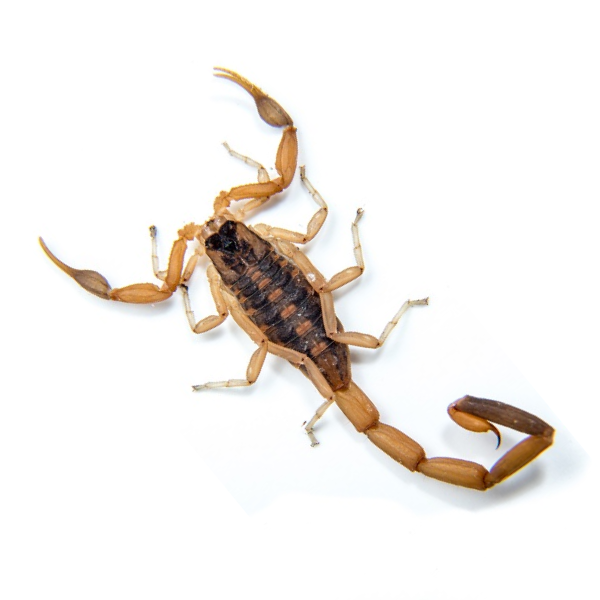Striped Bark Scorpion in Salina
The striped bark scorpion’s range across the United States has been expanding. It’s even found now here as far north as Salina. Unlike some scorpions, it doesn’t burrow. It seeks out protected areas for shelter during the day and forages at night. Typical prey consists of insects, other arachnids, and even juvenile members of its own species. Striped bark scorpions are venomous, and although the venom is not considered fatal, stings do hurt. It can also produce allergic reactions in sensitive individuals.
Striped Bark Scorpion Habitat
Striped bark scorpions have a wide geographic distribution and, as a result, dwell in a variety of habitats, from deserts to conifer forests to grasslands. Spending a substantial amount of time on the ground, this scorpion is typically found in vegetation, fallen trees, old weathered buildings in crevices, and under rocks, boards, or other debris. They may also come indoors, sheltering in a tight space as they do outdoors. They love to climb; they are often found in attics of homes.
Striped Bark Scorpion Behaviors, Threats, or Dangers
The venom of the striped bark scorpion is not considered fatal to humans. The most common reaction is pain and swelling on a scale similar to a bee sting. However, in rare cases, people do have sensitivity to the venom. This may result in chest tightness, nausea, vomiting, shortness of breath, and in the most severe cases, anaphylactic shock.
If you suspect a striped bark scorpion issue, contact your local pest control company.


